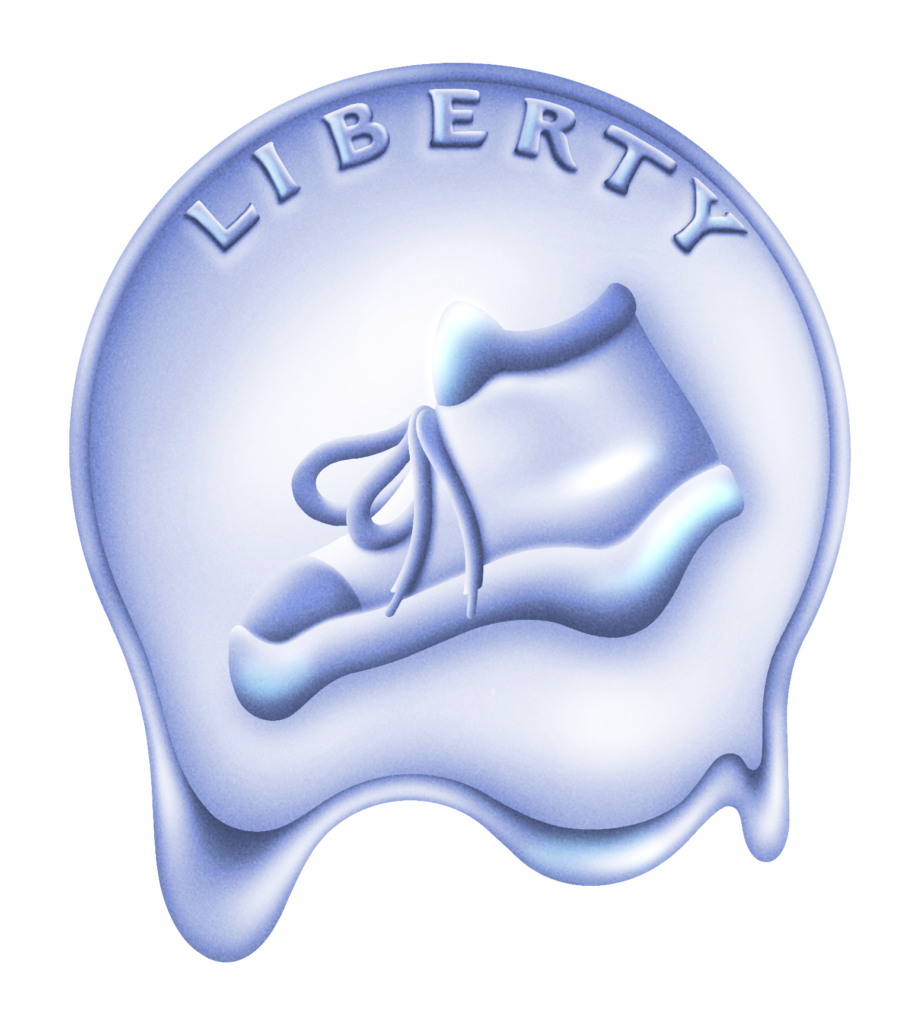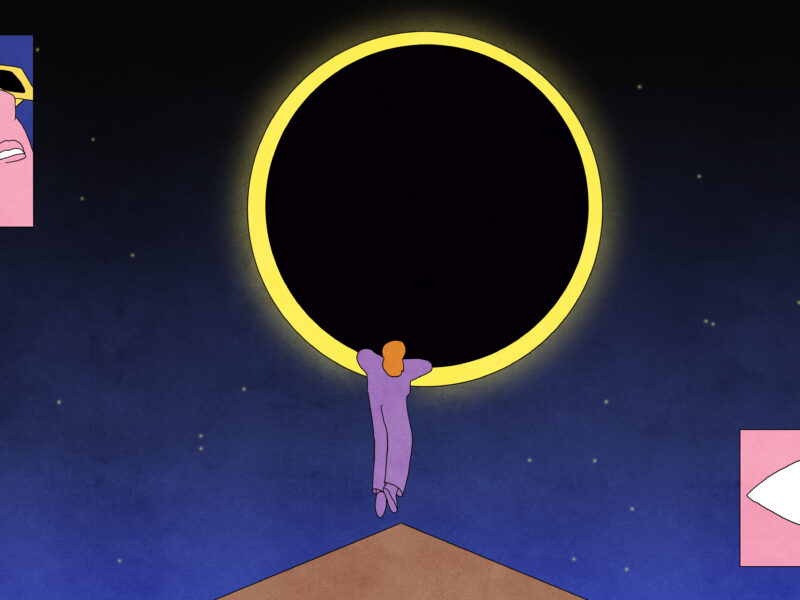What the mall tells us about American need.
I know what it feels like to want.
As a young girl, I had a spunky friend, who bossed me and dressed me, and she’d stand in her driveway, hand on her hip, taunting me, “How does it feel to want?”
It was a line in a film she saw.
At that time, I could not afford to want. But still, I wanted to have her hair, the way hairspray and crimping irons gave her that perfect Who’s The Boss, Alyssa Milano flair; her capacity to pick up dance moves, jumping off a chair like Janet Jackson in the “Pleasure Principle” video. I wanted her mom, how she sat with us at night and tickled our backs until we fell asleep, how she stocked the kitchen with healthy food, wheat germ, and honey.
Later, in foster care, I was nothing but a meat sack of want. I wanted privacy, time alone; I’d sometimes sit in the bathroom, door and eyes closed, blocking out everything outside. I wanted a home—a real home, with a dog and a family. I wanted to go back to my school where I was enrolled in accelerated classes—where I still had the freedom to dream of becoming a neurosurgeon, or a lawyer, or whatever profession would pull my mom and me out of poverty.
And the less I have, the more I want: Even now, I want ridiculous things with no purpose, the little capitalist elves getting to work on my brain. I want nail polish and lipsticks, nonsensical outfits—jumpers, one-pieces—boots, espadrilles, soaps and face creams. I want accolades, acceptance notices from fancy literary journals, and fellowships. And underneath it all, what I really want is love—to be seen, to be touched, to be held, to be kept, to be possessed wholly with all my good and all my naughty bits, a no turning away kind of love.
I want to move through the world with ease.
~
We try hard to make sense of things in a senseless time. My friend, who I’d spoken to every day before all this, but who’s since been exposed to the virus, or some other cruel thing that has her sleeping and using an inhaler, says wistfully into the phone, “I miss malls.”
Of malls, Frederic Jameson wrote in Postmodernism, “Overwhelmingly, our daily life, our psychic experiences, our cultural languages are processes performed in and contingent on commercial space.”
In the early days of the pandemic, I wonder what happens when we no longer have that commercial space or when that space becomes virtual. Where do we go when that pinnacle remains burning inside us, but the space to make it grow—disappears? What is America without the physical space to Want?
~
After World War II, Americans embraced the ideal of the suburbs. People moved away from big cities, and malls were a new indication of what LIVING would be like. For all those suburban households, the mall became the epicenter of activity, a place where we could brush arms with the Joneses. And all of us drove there—a luxury in itself. As Joan Didion writes in her essay “On the Mall,” “as a child in the late Forties in California, I recall reading and believing that the ‘freedom of movement’ afforded by the automobile was ‘America’s fifth freedom.'”
The previous four were outlined in Franklin D. Roosevelt’s 1941 State of the Union address: 1. Freedom of Speech, 2. Freedom of Worship, 3. Freedom from Want, 4. Freedom from Fear.
As for the third, what better homage is there to Want than the mall?
~
America’s first malls were outdoors; they were to be community centers—our zocalo—where people could come together for social interaction. These first malls appeared in the 1920s. One of the earliest was opened in the California boom town of Lakewood. With its 154 acres and sprawling parking lot, the Lakewood Shopping Center transformed fields of lima beans into a big city suburb—a precursor for what was to come.
J.C. Nichols, generally regarded as the father of the shopping center for his role in developing Country Club Plaza in Kansas City (1924), established many of the mall’s fundamental merchandising and management concepts. Nichols’ 1945 Urban Land Institute publication, Mistakes We Have Made in Developing Shopping Centers, codified the tenets of the modern mall with a list of 150 maxims, which covered everything from strategies to ensure local political support to adequate ceiling heights.

In 1956, the first enclosed mall—Southdale, in Edina, a suburb of Minneapolis—changed everything. It also firmly cemented Austrian architect Victor Gruen as one of America’s great mall pioneers. Gruen created a completely introverted building by enclosing once-open spaces and controlling the temperature, establishing the prototype for how we think of most malls today. As William Kowinski illustrates in Malling of America, once inside, the commercial potential of enormous spaces was realized in theatrical “sets” where “retail drama” could occur. Southdale was covered for practical reasons; Minnesota weather allows for only 126 outdoor shopping days a year. But the contrast between the freezing cold or blistering heat outdoors and the mall’s constant 72 degrees was only accelerated by its atrium centerpiece, the Garden Court of Perpetual Spring, filled with orchids, azaleas, magnolias, and palms.
~
Kowinski identifies mal de mall (literal translation: bad of mall, which could be interpreted as mall sickness) as both stimulation and sedation, characterized by disorientation, anxiety, and apathy. Margaret Crawford writes in her essay “The World In A Shopping Mall” of The Gruen Transfer (named after Victor Gruen), which “designates the moment when a ‘destination buyer’ with a specific purchase in mind is transformed into an impulse shopper, a crucial point immediately visible in the shift from a determined stride to an erratic and meandering gait.”
These effects, in part, might help explain the expansion of the typical mall visit from twenty minutes in 1960 to nearly three hours today. Eventually, the mall became a place to cruise. For teenagers to hang out, and work, and steal, and kiss. Gallerias everywhere achieved a reputation as a safe place for singles to meet, and where “mall walkers”—senior citizens and heart patients seeking a safe place to exercise—could arrive before the shops opened to walk a measured route around the corridors.
To that end, terrazzo tiles were introduced in the ’80s because developers thought the carpet would slow shoppers down. Architects also gradually increased lighting to create the illusion of longer afternoons. Finally, in 1992, the Mall of America opened, eventually featuring a whopping 5.6 million square feet of retail. The largest mall in North America, the mall sits just south of the Twin Cities, in Bloomington, Minnesota, and was built on the site of the former Metropolitan Stadium. To honor the location of home plate, the mall houses a plaque in its amusement park that commemorates a home run hit by hall-of-famer Harmon Killebrew on June 3, 1967—definitively placing this shopping center, and its absurd representation of excess, alongside America’s favorite past-time.
By the mid-90s, malls were being constructed at 140/year.
~
I was a latchkey kid when the Westside Pavilion finally arrived in Los Angeles in 1985; my young spunky friend who quoted movies about Want would raid her mother’s empty Sparkletts of change, and we’d walk the two miles to the mall. We spent all day trying on clothes at Wet Seal and Contempo Casuals; we’d spend any money we had on Mrs. Fields’ cookies or slices of pizza from Sbarro. We’d ride the escalator up and down.
Later the mall became a site for me to act out what feminist theorist Lauren Berlant calls “cruel optimism”: “A relation of cruel optimism exists when something you desire is actually an obstacle to your flourishing.” During the holidays, I’d go to the mall and finger all the items, look on longingly at the shoes and handbags, listen to the music, and see the line for Santa, and a part of me secretly hoped that perhaps someone would see me, and take pity on me, and offer to buy me all the things. But no one ever did.
~
There is, of course, a conventional association between women and mall space. Iconic films like Valley Girl and Clueless. Roseanne Barr’s television show, wherein her title character worked in the mall. And then, there’s the music.
I’m shuttin’ shit down in the mall
And tellin’ every girl she’s the one for me
And I ain’t even planning to call
I want this shit forever man, ever man, ever man, ever man
—Drake, “Forever”
For rapper Drake, girls are granted equivalence to stores as sources for reaffirmation of male dominance and economic success in the hip-hop market. As early as 1998, mall space provided a similar referent for Jay Z in “Can I Get A?”:
Do you need a balla? So you can shop and tear the mall up?
Brag, tell your friends what I brought ya
Jay Z directs his curiosities about mall space to female listeners, engaging end rhyme between “mall” and “balla,” a term initially used to describe wealthy athletes but which now refers to anyone or even anything admirable. While these dialogues with mall space certainly perpetuate the same anti-feminist stereotypes—positioning women as shoppers and as “shopped” by the male speakers—they reproduce the very real social relations that occur in mall space, both through the exchange of money for clothing, and sexually, through the bodies of the spatial practitioners.
For example, around 10 AM on April 12, 2019, a woman and her 5-year-old son were standing outside the Rainforest Café on the third floor of the Mall of America when 24-year-old Emmanuel Aranda approached. She asked him if they were in his way and should move. Mr. Aranda, without warning, picked her son up and threw him off the balcony. When asked why he did it, he said he was sick and tired of years of being rejected by women at the mall.
~
My generation, Generation X, could also be aptly named the Mall Generation, as we were around in the before times of malls and now in the after. The before times, for me, were riddled with trips to the local Kmart. A store that allowed for layaway, where we posed for studio-like holiday photos, drank bright blue or red slushies, and ate at the Kmart Cafe.

The first Kmart opened in San Fernando, California, in January 1962; 1500 miles north, and five months later, Sam Walton opened the first Walmart in Rogers, Alaska. Both were the blueprint for what a mall could be. In our small military town in northern California, Kmart was one of the few places to hang out. I touched and longed for all the items, imagined a need and a stealthiness with the camping gear, and extended the fictive dream of Capitalism—that somehow being near Jaclyn Smith’s discount clothing line put me in closer proximity to becoming one of Charlie’s Angels myself.
In the ‘80s, Ma got a job as a security officer for Kmart, and when they were robbed, she was blamed and then let go of. Years later, I worked graveyard at the Winchell’s Donut, and I, too, was robbed and then fired. In reality, Jaclyn Smith’s discount clothing line just put me closer to who I always was, a girl whose Ma’s bounced check was on display at the Food King on Westwood Blvd. A girl who was called to the front of the class with all the other poor kids to get her lunch tickets. The tickets she tucked into the side of her Payless Shoesource ProWings, a brand of shoes all the kids talked smack about.
~
In researching genres, I recently discovered a form of ‘80s minimalist literature called “dirty realism,” also known as “Kmart realism.” Author Paul McFedries, in the craft book Word Spy: The Word Lovers Guide To Modern Culture, defines the precursors of Kmart realism as “trailer park fiction, Diet-Pepsi minimalism, and hick chic.” Miriam Clark writes in Studies in Short Fiction that it “represent[s] and reproduce[s] the disintegration of public life [and] the colonization of private life by consumer capitalism.”
Authors Bobbie Ann Mason and Joy Williams are most known for this genre, likely coined by author Tom Wolfe in reference to stories that mention Dairy Queens and third-rate motels. In his introduction to Patchwork: A Bobbie Ann Mason Reader, George Saunders writes, “You could say, as critics have, that Mason is writing about a particular form of late-twentieth-century American sadness, a moment during which something has fundamentally shifted in the American ethos. The way I would say it is that she is bearing witness to our descent into a new era of pure materialism.”
~
If Bobbie Ann Mason is representative of Kmart realism, then I wonder who or what literature would represent Caruso realism. I’m speaking here of Rick Caruso, the Los Angeles mall developer and mayoral candidate. Caruso’s The Grove and The Americana at Brand are the epitome of Los Angeles’ animated spaces, spaces that are part fairy ground and part extensions of the body of Los Angeles. Caruso’s intentional use of mall space and large multi-use dwelling-consumer spaces have become LA’s theme park phantom limbs, filling the ghost imprint of the homes and apartment units bulldozed in the mid-20th century.
Both The Americana at Brand and The Grove are organized upon the idea of a city center—with a mix of architectural styles, building heights, materials used, and vast open spaces at their center. The Grove is reminiscent of 1930s Los Angeles; meanwhile, The Americana reflects the brick factory facades of the industrial era, with its massive elevator shaft with exposed steel beams.
Each of the two intends to appear to be a public space but is private property and is protected as such. But if mall decor and design are not explicit enough to tell young people of color or the unhoused that they are not welcome, more literal warnings can be issued. A bronze plaque placed at the Grove’s southern entrance spells out the house rules: “The Grove is private property and has not at any time been dedicated to public uses,” listing 18 activities from which visitors must refrain. While the two-acre park in the center of the Americana is technically public property, the private security force that patrols it prevents anyone from photographing with professional equipment without permission. “Sitting on floors, handrails, stairs, escalators, trash receptacles and other areas not specifically designed for seating” is also restricted. The Americana at Brand allows dogs on the property—except on its grassy area, and unless the dog in question is a pit bull.

Still, in a city that lacks accessible public space, The Grove and The Americana provide a peek into an alternate reality. Pedestrianized streets. Seamless sidewalks. Reliable transit. Shady trees. Alissa Walker writes in New York Magazine, “Yes, in theory, the Grove represents the dystopian future where billionaire developers have cordoned off our public spaces into oversurveilled fortresses. But in reality, elements of this future are very appealing to Angelenos. That’s why they go there. If they don’t readily admit that they do, they’re lying. Everybody loves the Grove.”
I will confess here that in recent years, I, too, have found some joy at my local outdoor mall—Americana at Brand—after one winter, as the fake snow blasted upon us, my now-wife bent down on one knee and proposed beside the iconic dancing water fountain.
~
In 1787, Grigory Potemkin, former lover of Empress Catherine II, supposedly erected phony portable settlements along the banks of the Dnieper River to impress the Russian Empress and her guests on their way to Crimea. He would then disassemble and reassemble the village along the way. Today, the term “potemkin” is used in politics and economics as any construction whose sole purpose is to provide an external façade to a country that is faring poorly, making people believe that the country is faring better.
As I write this, Caruso is running for mayor, and some Angelenos are concerned that he will try to apply these same guidelines and principles to the entire city. “You go to the Grove; it represents everybody in this great city of ours. It’s every background. It’s every color. It’s every creed,” Caruso told the Los Angeles Times editorial board earlier this year. Often compared to Walt Disney, the 63-year-old is known for a similar pseudo-urbanism, equal parts utopianism and nostalgia. He’s also known for switching his party affiliation for the race, as he was very publicly registered as a Republican three years ago. Caruso is now making it to the general election after sinking millions of his own money into ads for his campaign, featuring actors and personalities such as Gwyneth Paltrow and Snoop Dogg. The Americana, as I see it, is the modern-day Potemkin Village; and Caruso, the modern day Potemkin.
~
Being an off-brand kid—a Kmart kid, sometimes even in the time of malls—I was always consumed with desire; that achy want. The word consumption from the late 14th century to mean “wasting of the body by disease”; from Old French consumpcion, “A using up, wasting”; from consume, “the using up of material, destruction by use.”
For me, it is a truly American experience to be overwhelmed with this desire to consume, to waste. I walk around my college campus and cut through USC’s University Village, a Caruso-endorsed project. In this instance, University Village is a $700 million multi-use development described by the LA Times as “a fantasia of just-add-water heritage, equal parts Disneyland and Hogwarts.” As trustee and longtime donor, Caruso has been quoted as stating, “It makes it a much more vibrant neighborhood.”
University Village is home to an Amazon pick-up center, a Target, a Trader Joe’s. But there’s most reliably a line outside of Dulce, an artisanal cafe and donut shop. I spy a plump matcha donut in the window dusted with sugar, a dollop of cream winking on the mouth-hole. I want it. Between classes, sweaty, and arm aching from my heavy book bag, I rush past a spa called Face Haus, where customers can stop in for an afternoon facial; I see the aestheticians, their face masks, an advertisement of a woman, her hair wrapped in a towel, eyes closed, relaxing beneath a cool layer of serums. I want it. Some days when I’m in need of comfort, a hug, words of encouragement, I linger a bit too long in front of Honeybird, with their southern fried chicken, banana cream pie; it smells like somebody’s home. I want it, too.
This year, I’ve received notice from two of my undergraduate students stating they had to leave the school after tuition was raised from the already-staggering $60k/year. They do not want to leave. I do not want them to leave. But they do not have what they need to stay. Money.
~
In 1943, The Saturday Evening Post published a series of oil paintings by the Americana artist Norman Rockwell that came to be known as “The Four Freedoms,” along with corresponding essays for each. “Freedom From Want” was published alongside an essay by Filipino writer and labor activist Carlos Bulosan. At the time, Bulosan was a migrant laborer working intermittent jobs when the Post tracked him down to contribute the essay. Initially, the Post lost it, and as there was no carbon copy, Bulosan had to track down the only other draft he had stashed at a bar in Tacoma.
Ultimately, Bulosan’s essay proposed that while citizens had obligations to the state, the state had an obligation to provide sustenance to its citizens. Unlike Roosevelt, Bulosan presented the case that the New Deal had not already granted freedom from want as it did not guarantee Americans the essentials of life.

Lately, walking through University Village, I find myself thinking of Want. The facials, the nail salon, yes—but also, the grocery store. As an undergrad, every week, I’d buy a loaf of bread, a can of sweetened condensed milk, and a container of instant coffee. I’d pour the milk on my toast for breakfast and dinner and use it to lighten and sweeten my coffee. I remember the anguish of passing the fast food restaurants on my campus; how the credit card companies would set up tables right outside the Burger King. It worked.
In 2022, it costs up to $30 a day to park on campus, but if you can nab it, there’s free parking on Frat Row off of Hoover. Here, there are people tabling, too—but rather than signing students up for credit cards, they’re selling test strips people can put in their drinks to make sure they aren’t roofied. It works.
If you travel about twelve miles southeast from USC, you’ll hit The Compton Towne Shopping Center, a mall not designed by Caruso. You likely won’t find many USC students there. Compton, a city of 95,000 residents, acutely faces issues of racial injustice and structural inequality—issues that largely haven’t touched USC. Many of Compton’s residents are either unemployed, poorly paid, or ineligible for government assistance. Upwards of 1 in 5 Comptonians live in poverty—double the nationwide average. Compton also happens to be home to the largest city-based guaranteed income pilot project in the country, The Compton Pledge. According to the Compton Pledge website, “Local housing assistance in Compton is at capacity, presenting unaffordable hardships for a city where 46% of residents are renters. In Compton, rates of unemployment have risen to 21.9% since the beginning of COVID-19, and a growing number of residents regularly rely on food pantries.”
Ninety years after Franklin D. Roosevelt’s New Deal and local governments and private nonprofits are still trying to deliver on its promise. Ninety years after Franklin D. Roosevelt’s New Deal and we still haven’t achieved his promise of “Freedom From Want.” Because ninety years after Franklin D. Roosevelt’s New Deal, America can’t even deliver on freedom from need.
And what we need, of course, a mall can’t give us.
A small portion of this essay originally appeared in Lenny Letter.
Additional fact checking by Apoorva Tadepalli.



